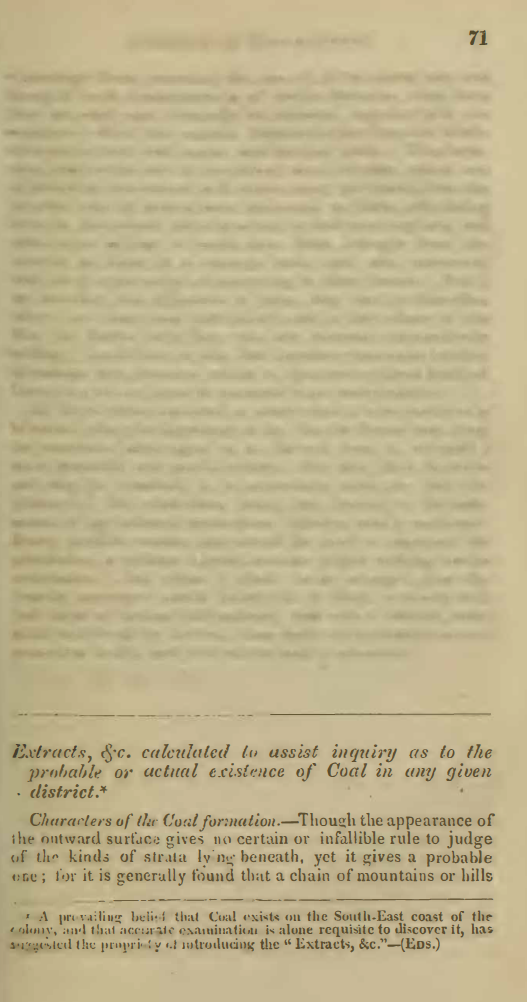Extracts, &c. calculated to assist inquiry as to the probable or actual existence of coal in any given district
DOI:
https://doi.org/10.21504/saqj.11.2619Keywords:
Coal Formation, Geological Strata, Coal Exploration, Mineral Prospecting, Boring (Drilling), Rock Types, Mining EngineeringAbstract
This document provides a detailed, practical guide for geological inquiry to determine the probable existence and location of coal seams in a given district.
The guide begins by describing the favourable topographical characteristics for coal: areas with valleys, moderately rising hills, and plains, particularly those distant from steep mountain chains. It then outlines methods for examining a formation:
-
Examine "Crops" of Strata: Trace visible strata in precipices and hollows, noting their type, thickness, order, inclination (dip), and regularity.
-
Analyze Mineral Springs: Look for "iron water" (bearing rust-colored sediment) or springs with a bluish scum and astringency, as the coal stratum is the most general reservoir for such water.
-
Search Surface Matter: Check turned-up soil (from ploughing or digging) for detached, firm pieces of coal and other mineral fragments (like shiver or freestone), which indicate the coal seam is nearby and at a slightly higher elevation.
The memoir emphasises that when evidence is only probable, the most advisable next step is boring (drilling) rather than sinking a pit, as it is cheaper and necessary for absolute certainty. It also describes the proper sequential placement of trial boreholes (A, B, C) based on the dip of the strata.
Finally, the text details the typical rock types found in a coal formation, including Whinstone (hardest, coarse texture), Post-stone (hard freestone, fine texture, varieties like white, gray, brown, and red), Sand-stone (coarser, friable texture), Metal-stone (argillaceous, contains iron ore nodules), and Shiver (soft, black or dun color, laminated texture, often called "bleas" or "black metal" by miners).
Downloads

